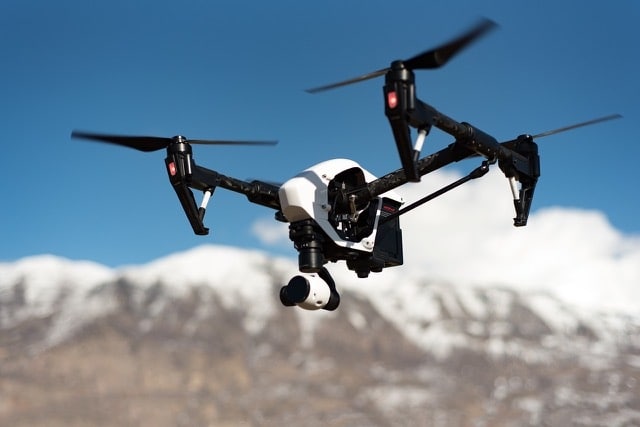
By Pablo Viollier
Public Policy Analyst at the NGO Derechos Digitales
The mayors of the wealthiest districts of the eastern sector of Santiago have led an initiative to add surveillance technology to measures to reduce crime. This trend was premiered by Lo Barnechea and Las Condes in mid 2015, when they installed three military-style video surveillance balloons in their sectors. After the municipal elections of 2016, Mayor Felipe Alessandri announced that a balloon of similar characteristics would be installed in Santiago, whose implementation is pending. This year, the debate has returned to the public following the announcement of Las Condes and Providencia, who intend to use remote-controlled drones equipped with high-resolution cameras to monitor the parks and streets of their communities to reduce crime.
The implementation of these different surveillance systems has not been without controversy. The case of the surveillance balloons in Lo Barnechea and Las Condes not only experienced a considerable backlash from public opinion and extensive journalistic coverage, but also civil society organizations – including Derechos Digitales, Fundación Datos Protegidos and Corporación Fundamental – who resorted to legal actions to stop the operation of the balloons and thus safeguard the privacy and inviolability of the homes of affected neighbors.
The Court of Appeals of Santiago ruled in favor of the appellants, stating that the right to privacy of the residents was effectively violated, and ordered the cessation of the operation of the balloons. However, the Supreme Court modified that ruling, and it although it confirmed that the use of the balloons violated the rights of the people, the Court allowed their use under four conditions: they only monitor public space, a municipal inspector must supervise operation, the recordings are periodically eliminated, and access to those recordings must be given to those who are affected. Unfortunately, since the ruling, some have hinted that any surveillance system that is implemented in the future will be lawful to the extent that it meets these four conditions, as appears to happen in the case of drones in Providencia.
Privacy, the price of security?
Privacy has the peculiarity of being a right that functions as a guarantee for the exercise of other rights. That is to say, it not only serves the function of allowing people to not feel their lives are invaded in their zone of trust, but a necessary condition to be able to exercise other rights, such as the right to freedom of expression, assembly, petition and access to information. However, the public debate has mostly concentrated on the effect of discomfort the different monitoring mechanisms have on those affected, without considering the inhibitory effect these mechanisms can have in the exercise of other rights.
On the other hand, privacy is also particular in how it can be infringed. Mayor Evelyn Matthei seems to acknowledge this by declaring that people “knowing they are being watched, can effectively change behavior.” Indeed, the mere fact of feeling observed, even if it is not effective, already causes a violation of privacy. If Providencia’s residents change their routine, close their windows to change their clothes or abandon certain outdoor activities for fear of being recorded, it is because their privacy has been breached. The question is, then, whether it is worth committing all the inhabitants of a community to constant and permanent vigilance to implement a system of dubious effectiveness.
Not all surveillance systems are the same
The authorities of Las Condes and Providencia have announced that, unlike surveillance balloons, the objection regarding privacy would have no place in the implementation of the drone system, as it would only record the public space. The reasoning starts from a wrong premise: that there is no such thing as privacy in public space. Privacy in the public space has been recognized by the US Supreme Court and the European Court of Human Rights, and although it is not as intense as the one you can enjoy inside your home, it can certainly be violated. It is the reason why countries like Canada have fine-grained regulation of the conditions that must be fulfilled for police being able to carry out video surveillance in public places. The fact that there is no legislation in Chile in this respect cannot become an argument to give absolute powers, without checks and balances, to the municipalities in this matter.
In this sense, the intrusive capacity of the drones is much higher than that of the surveillance balloons. While both devices can be equipped with high-resolution cameras, a drone’s capacity to get close to the target it seeks to record means that the intrusive potential of its operation is far superior. Therefore, their operating only in public spaces is not sufficient to support the implementation of a massive, intrusive and disproportionate surveillance system.
Also, the nature of the drones makes their use even more sensitive in terms of privacy in the public space. Unlike surveillance balloons, drones can move and even follow a person, a possibility that has already been presented by a municipality as an advantage. In order to monitor a defendant, the Public Prosecutor’s Office requires prior judicial authorization. Is it understandable to pretend that a municipality has the discretion to carry out the same activity with respect to any person who seems suspicious? The answer can only be negative.
Surely in the future will be many populist proposals that seek to combat crime with more colorful than effective measures. It will be the work of citizens, civil society and academia to ensure that the discussion of public policies focuses on evidence and respect for fundamental rights.



